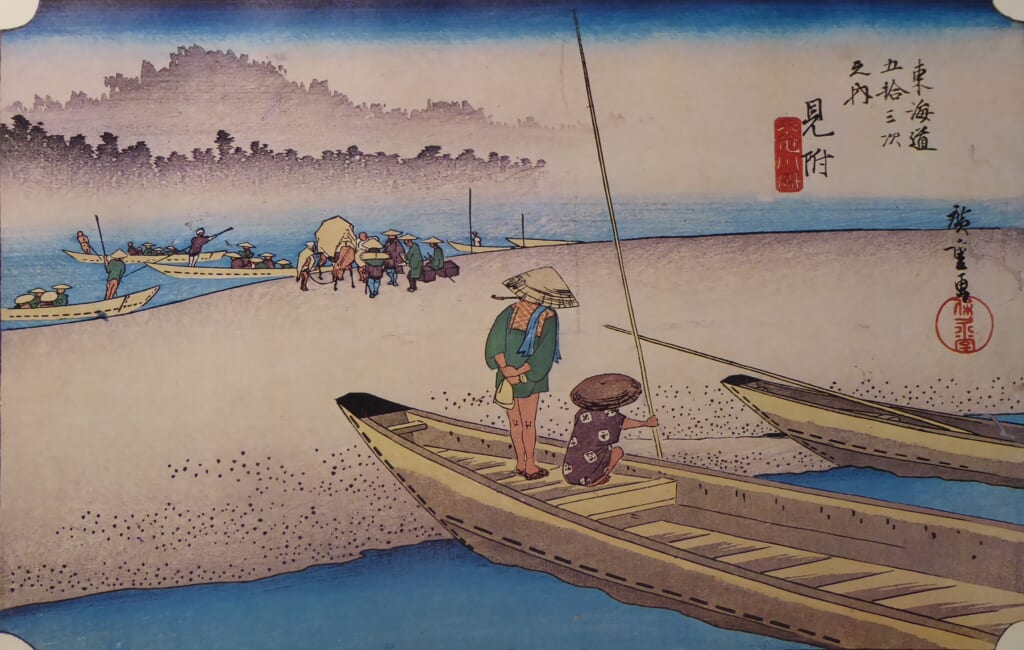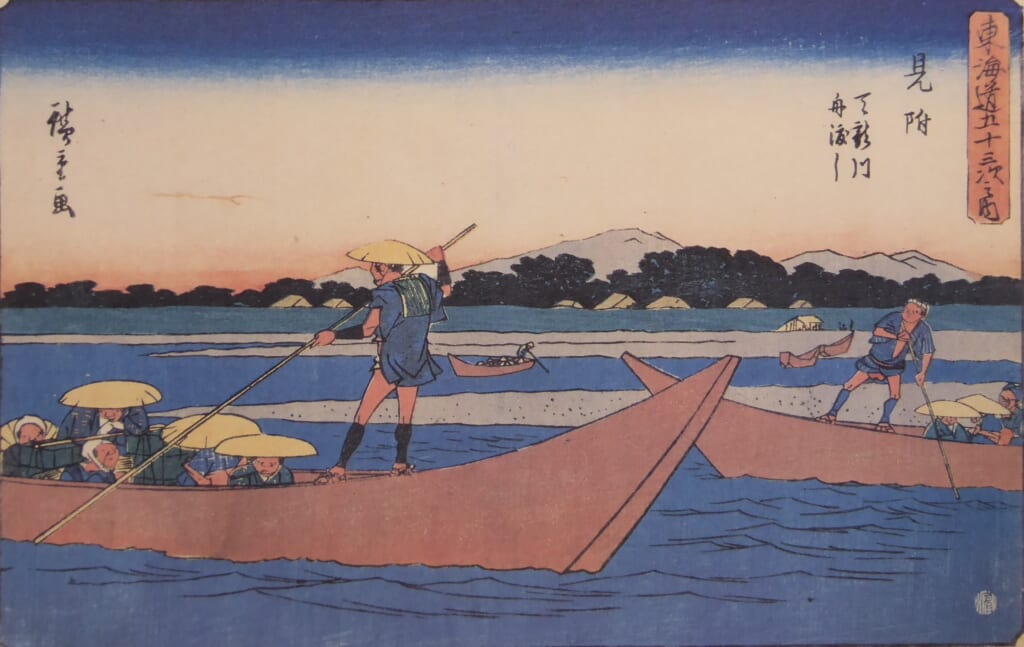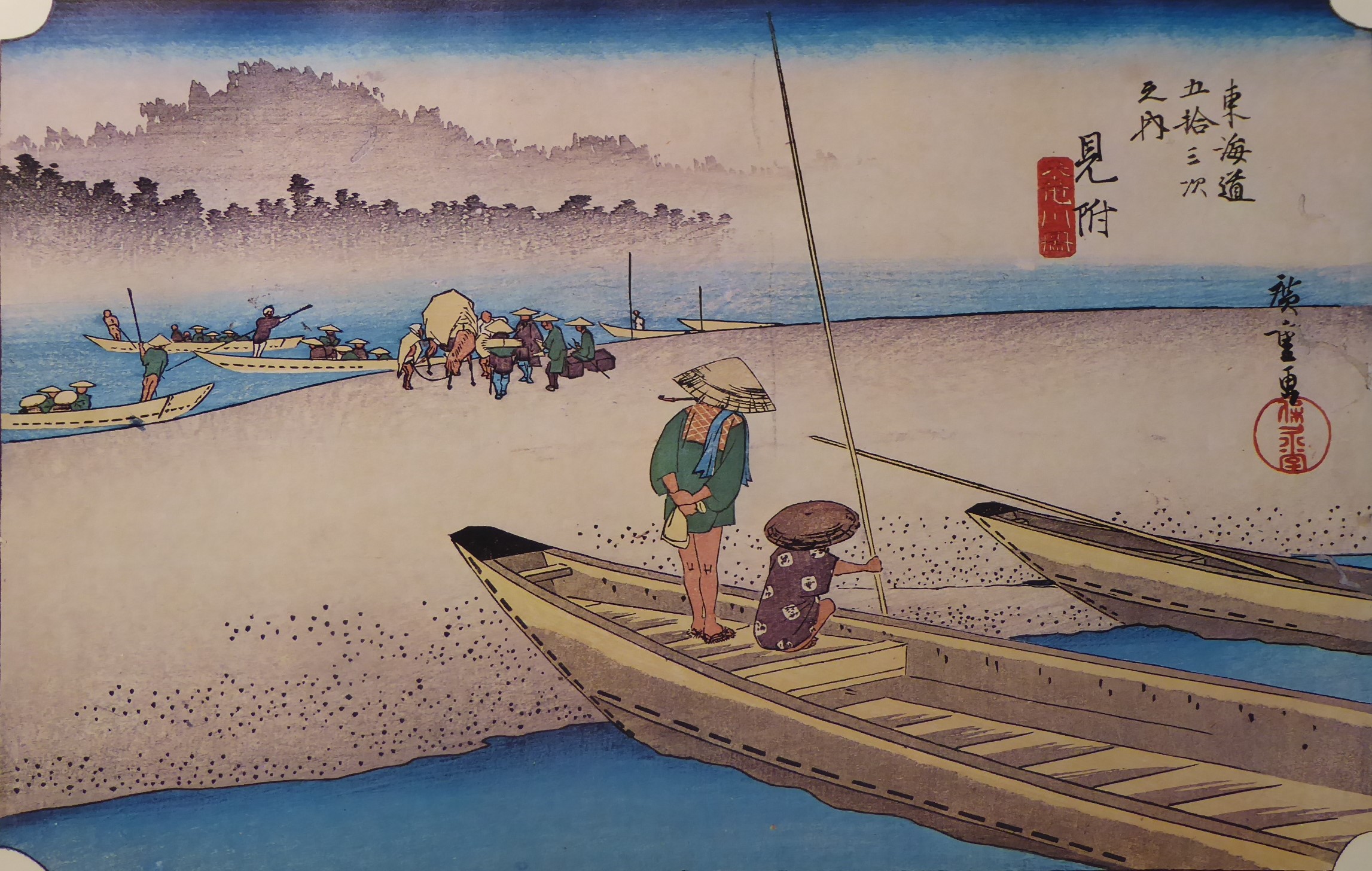Explanation of the Fifty-three Stations of the Tokaido 29 Mitsuke
16.5km from Hamamatsu to Mitsuke 34°43’37″N 137°51’25″E
Mitsuke is the 28th post station on the Fifty-three Stations of the Tokaido.
It is located near Mitsuke in Iwata City, Shizuoka Prefecture.
The name “Mitsuke” comes from the fact that the land borders water.
To the northwest is the Ichinotani medieval burial grounds.
This was originally the site of the provincial capital of Totomi Province in the 10th century.
During the Kamakura period, the provincial government office and the shugosho were located here.
It was one of the largest post towns on the medieval Tokaido.
Mitsuke was a very lively post station with two honjin, one wakihonjin, and 56 inns.
Mitsuke-juku is on the left bank of the Tenryu River, but unlike the Oi River, the water is deep, so boats are mainly used.
It was not as difficult as the Oi River.
However, when the river was halted, it was crowded with people stranded, just like Shimada-juku.
It was a temple town for Totomi Kokubunji and Mitsuke Tenjin, and a junction for Honzaka-dori.
When the Tokaido Main Line was being built, Nakaizumi Station was established in Nakaizumi Village, south of Mitsuke-juku.
Mitsuke and Nakaizumi merged to form Iwata Town in 1940.
It is an industrial city with local industries such as textiles, metals, automobiles, and musical instruments.
It is also one of the prefecture’s leading agricultural producers.
Greenhouse melons, tea, white onions, shrimp potatoes, Chinese vegetables, and whitebait are famous.
It is the home town of Jubilo Iwata, a soccer team in the J.League.
It is also the home ground of the Shizuoka Blue Revs in the Japan Rugby League One.
① “Hoeido version”
The Tenryu River is a rapid, so people crossed it by boat.
This depicts the scene of this boat ferry.
There are many ukiyo-e prints of rivers along the Tokaido, but this is a masterpiece among them.
The waters of the Tenryu River divide the river into two, the eastern one called Daitenryu and the western one called Kotenryu.
The foreground of the picture is Kotenryu, and the background is Daitenryu.
The two ferry boats and the two boatmen are in focus.
On the other side of the sandbar, a procession of feudal lords board several boats and begin to cross Daitenryu.
It is probably still early in the morning.
The background is blurred, expressing the lyricism of the Tenryu River choked with morning mist.
② “Gyosho version”
A large boat is used to cross the rapid Tenryu River.
This depicts two boats passing each other.
The boat is drawn simply, giving it a clean look.
③”Reisho version”
A bird’s-eye view of the ferry boat on the Tenryu River.
The overall picture of the ferry boat is clear, and you can see the size of the Tenryu River and how it was a key transportation point.
④ “Hokusai version”
A detailed depiction of part of a daimyo procession across the ferry boat.
⑤ “Travel image”
A stone monument at Mitsuke-juku.
⑥ “Stamp image”
A stamp for an event.
Hoeido version

Gyousyo version

Reisho version

Hokusai version

Travel image

Stamp image



